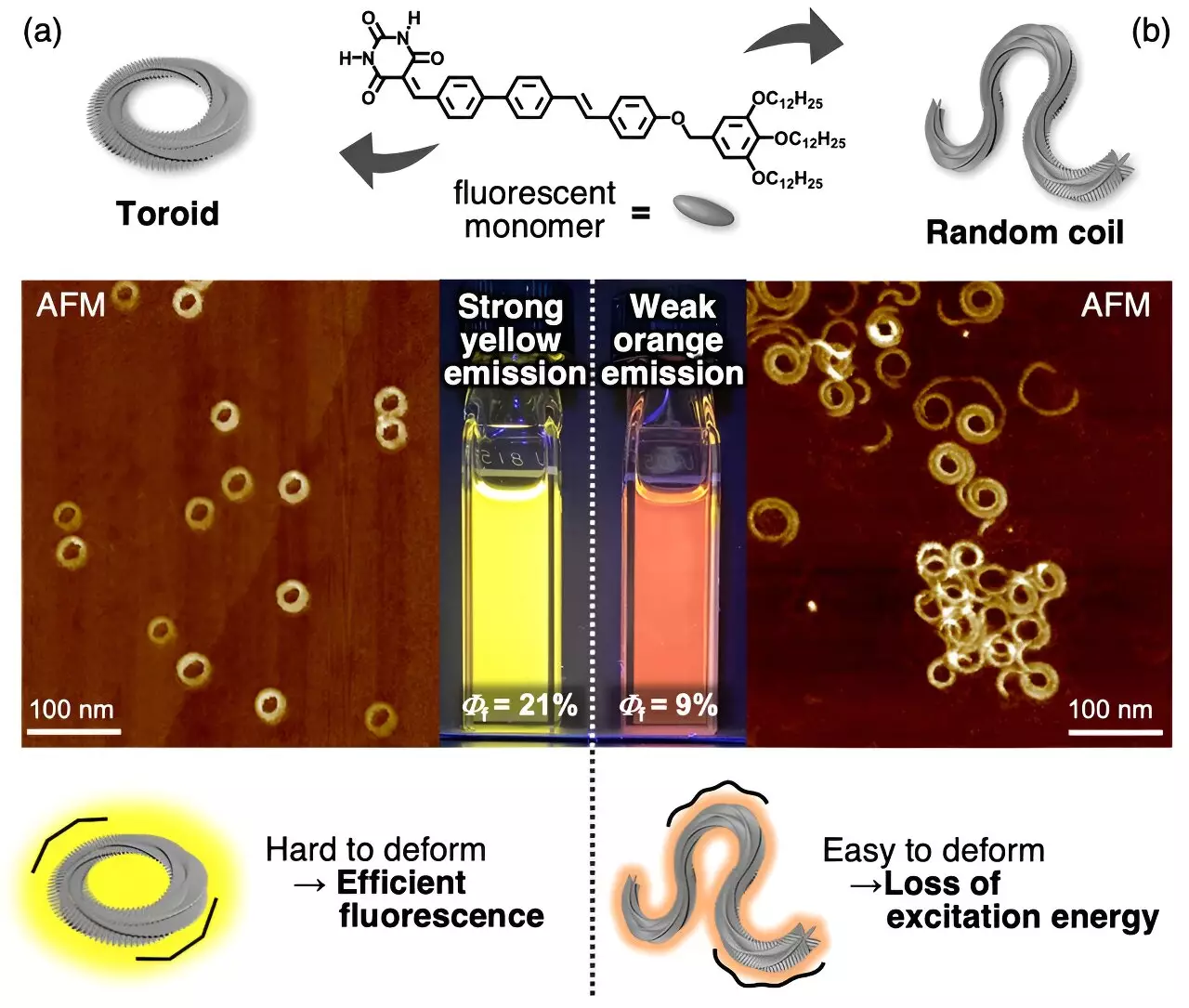Supramolecular chemistry has long been an intriguing field, with scientists delving into the self-assembly state of molecules to understand their properties. The ability to control and manipulate the self-assembled state opens up possibilities for designing materials with specific properties, such as charge transport capability and fluorescence wavelength. However, studying structures with supramolecular polymer assemblies derived from the same monomer has been challenging due to dynamic structural changes and limited control over self-assemblies.
A recent study, led by Prof. Shiki Yagai from Chiba University, examined the properties of one-dimensional mesoscale supramolecular assemblies composed of the same luminescent molecule. The study focused on two different structures: one with a closed circular pattern and the other without. Surprisingly, the two structures exhibited vastly different properties. Sho Takahashi, a doctoral course student at the Graduate School of Science and Engineering at Chiba University, served as the first author of the study, which also involved Prof. Martin Vacha from the Department of Materials Science and Engineering at Tokyo Institute of Technology and Dr. Hikaru Sotome from the Graduate School of Engineering Science at Osaka University.
The Appeal of Circular Structures
Circular structures have always fascinated chemists due to their geometrical beauty. The synthesis of giant cyclic molecules represents not only an aesthetic achievement but also highlights the elegance of the process. Prof. Yagai explains that nature itself utilizes the functional beauty of circular structures, as seen in the light-harvesting antenna organ of purple photosynthetic bacteria. This antenna organ, known as LH2, features a circular structure that enables efficient light collection and excitation energy transfer. Prof. Yagai and his team sought to explore the potential of circular structures in their own molecular design.
Experimental Approach
To obtain one-dimensional π-conjugated molecular aggregates, the team self-assembled luminescent molecules based on their own molecular design. This process resulted in a mixture of structures, namely terminus-free cyclic structures (toroids) and randomly coiled structures. The resulting mixture displayed low-energy and low-intensity luminescence. To separate the two structures, the team employed a novel dialysis technique that took advantage of their different kinetic stabilities. Once separated, they observed that the closed toroidal structure exhibited higher energy and more efficient luminescence compared to the random coils.
To gain further insights into the topology-dependent fluorescence properties, the team conducted ultrafast laser spectroscopy. Their findings revealed that random coils with termini experienced excitation energy loss due to defects generated by fluctuations in the solution. In contrast, the toroids remained intact and exhibited fluorescence without energy loss. Additionally, in a mixed solution of toroids and random coils, the excitation energy transferred from the toroid to the random coil through the agglomeration of both assemblies, resulting in observed luminescence solely from random coils.
Morphological Control and Purification
This study emphasizes the importance of morphological control at the mesoscale level when designing functional materials. It highlights the need for purification in cases of supramolecular polymorphism, such as the toroids and random coils examined in this study. Without separation, the obtained results may reflect biased properties influenced by energy transfer between different structures. By purifying the assemblies, researchers can obtain more accurate and distinct properties of each structure.
Implications and Future Possibilities
The insights gained from this study have promising implications for the development of high-performance flexible devices using cyclic molecular assemblies. The correlation between structural beauty and functional beauty discovered in mesoscale molecular assemblies opens up avenues for enhancing the performance of solar cell devices and light-emitting devices. Prof. Yagai concludes by expressing optimism that these advancements will contribute to the widespread acceptability of such devices and enrich people’s lives.
By exploring the impact of molecular organization on supramolecular assemblies, this study sheds light on how control over self-assembled structures can lead to the design of materials with desired properties. The investigation of one-dimensional mesoscale supramolecular assemblies reveals the distinct properties exhibited by different structures and the importance of purification in analyzing their photophysical properties accurately. With further research in this field, the development of high-performance flexible devices using cyclic molecular assemblies may become a reality, opening up new possibilities in various technological applications.


Leave a Reply